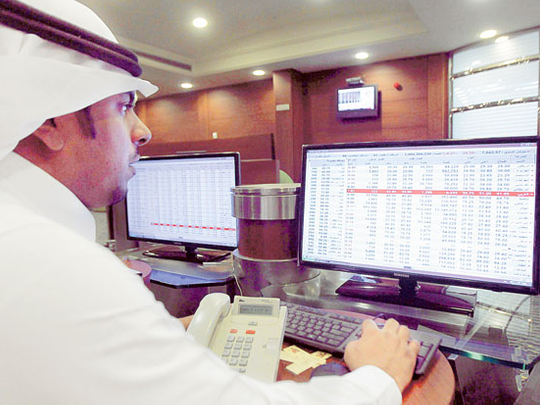
Dubai: Investors’ appetite for Saudi Arabia’s equities spiked in August ahead of the second phase of MSCI emerging markets index (MSCI EM) inclusion, according to data on capital inflows tracked by the Institute of International Finance (IIF).
Data shows the kingdom attracted $18 billion (Dh66.1 billion) in foreign portfolio equity inflows so far this year, as foreign investors have significantly increased their exposure to Saudi equities ahead of the upgrade.
“The inclusion of local stocks to broad equity benchmarks acknowledges the progress made by Saudi Arabia in reforming its capital market system. Following the upgrade in March of this year, FTSE Russell has already started adding Saudi equities to its index,” said Boban Markovic, senior analyst at the IIF.
After the first phase in June, when MSCI added Saudi Arabia’s stock to its emerging markets index with an initial weight of 1.45 per cent, the index compiler will complete the upgrade at the end of August by increasing the weight of Saudi equities to 2.8 per cent of the total index.
“We expect the second phase of the upgrade to attract an additional $5 billion in equity inflows to the oil-rich kingdom. Early positioning by investors has been relatively slow since the MSCI inclusion announcement last year due to concerns about policy uncertainty, high valuations for Saudi-listed firms, and reputational issues related to the Khashoggi incident,” said Markovic.
The latest fund flow trends show that investors have shrugged off such concerns this year. Analysts said, were it not for global trade conflict and concerns regarding the escalation of regional tensions, inflows to Saudi Arabia would have been even higher.
Ahead of emerging markets
In the first eight months of this year, foreign equity inflows to Saudi Arabia surpassed those of India and China, which is remarkable given that Saudi Arabia’s economy is just a fraction of the size of India and China.
“Strong inflows to Saudi Arabia stand in sharp contrast to other emerging markets [EMs]. After a positive performance in the first quarter of this year, renewed trade tensions sparked a sharp decline in equity flows to most EMs. According to our Capital Flows Tracker, May 2019 was perhaps the worst-performing month for EM equity flows since the taper tantrum,” said Garbis Iradian, Chief Economist, Mena.
So far, August portrays an equally negative picture, as the EM sell-off in the first two weeks of this month was fairly even across the board. In contrast to other EMs, Saudi Arabia received more than $4.5 billion in foreign equity inflows in May, and $2 billion in the first three weeks of August, becoming the top equity investment destination among emerging markets.
“We expect Saudi Arabia to continue reaping the benefits of the capital markets reform and the inclusion in global indices. In the absence of major domestic and external shocks and further deterioration in EM investment sentiment, Saudi Arabia can count on additional equity inflows from active investors whose portfolios are benchmarked to the MSCI EM index,” said Iradian.












